
Palm oil is an edible vegetable oil derived from the mesocarp of the fruit of the oil palms. The oil is used in food manufacturing, in beauty products, and as biofuel. Palm oil accounted for about 33% of global oils produced from oil crops in 2014.

Biofuel is fuel that is produced through contemporary processes from biomass, rather than by the very slow geological processes involved in the formation of fossil fuels, such as oil. Since biomass technically can be used as a fuel directly, some people use the terms biomass and biofuel interchangeably. More often than not, however, the word biomass simply denotes the biological raw material the fuel is made of, or some form of thermally/chemically altered solid end product, like torrefied pellets or briquettes.

Biodiesel is a form of diesel fuel derived from plants or animals and consisting of long-chain fatty acid esters. It is typically made by chemically reacting lipids such as animal fat (tallow), soybean oil, or some other vegetable oil with an alcohol, producing a methyl, ethyl or propyl ester by the process of transesterification.

A renewable resource, also known as a flow resource, is a natural resource which will replenish to replace the portion depleted by usage and consumption, either through natural reproduction or other recurring processes in a finite amount of time in a human time scale. When such recovery rate of resources is unlikely to ever exceed a human time scale, these are called perpetual resources. Renewable resources are a part of Earth's natural environment and the largest components of its ecosphere. A positive life-cycle assessment is a key indicator of a resource's sustainability.
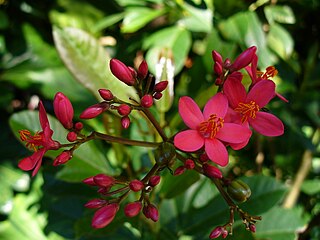
Jatropha is a genus of flowering plants in the spurge family, Euphorbiaceae. The name is derived from the Greek words ἰατρός (iatros), meaning "physician", and τροφή (trophe), meaning "nutrition", hence the common name physic nut. Another common name is nettlespurge. It contains approximately 170 species of succulent plants, shrubs and trees. Most of these are native to the Americas, with 66 species found in the Old World. Plants produce separate male and female flowers. As with many members of the family Euphorbiaceae, Jatropha contains compounds that are highly toxic. Jatropha species have traditionally been used in basketmaking, tanning and dye production. In the 2000s, one species, Jatropha curcas, generated interest as an oil crop for biodiesel production and also medicinal importance when used as lamp oil; native Mexicans in the Veracruz area developed by selective breeding a Jatropha curcas variant lacking the toxic compounds, yielding a better income when used as source for biodiesel, because of its edible byproduct. Toxicity may return if edible Jatropha is pollinated by toxic types.

This article describes the use and availability of biodiesel in various countries around the world.
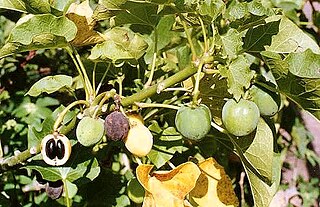
Biofuel development in India centres mainly around the cultivation and processing of Jatropha plant seeds which are very rich in oil (40%). The drivers for this are historic, functional, economic, environmental, moral and political. Jatropha oil has been used in India for several decades as biodiesel for the diesel fuel requirements of remote rural and forest communities; jatropha oil can be used directly after extraction in diesel generators and engines. Jatropha has the potential to provide economic benefits at the local level since under suitable management it has the potential to grow in dry marginal non-agricultural lands, thereby allowing villagers and farmers to leverage non-farm land for income generation. As well, increased Jatropha oil production delivers economic benefits to India on the macroeconomic or national level as it reduces the nation's fossil fuel import bill for diesel production ; minimising the expenditure of India's foreign-currency reserves for fuel allowing India to increase its growing foreign currency reserves. And since Jatropha oil is carbon-neutral, large-scale production will improve the country's carbon emissions profile. Finally, since no food producing farmland is required for producing this biofuel, it is considered the most politically and morally acceptable choice among India's current biofuel options; it has no known negative impact on the production of the massive amounts grains and other vital agriculture goods India produces to meet the food requirements of its massive population. Other biofuels which displace food crops from viable agricultural land such as corn ethanol or palm biodiesel have caused serious price increases for basic food grains and edible oils in other countries.

Energy crops are low-cost and low-maintenance crops grown solely for energy production by combustion. The crops are processed into solid, liquid or gaseous fuels, such as pellets, bioethanol or biogas. The fuels are burned to generate electrical power or heat.
Pongamia oil is derived from the seeds of the Millettia pinnata tree, which is native to tropical and temperate Asia. Millettia pinnata, also known as Pongamia pinnata or Pongamia glabra, is common throughout Asia and thus has many different names in different languages, many of which have come to be used in English to describe the seed oil derived from M. pinnata; Pongamia is often used as the generic name for the tree and is derived from the genus the tree was originally placed in. Other names for this oil include honge oil, kanuga oil, karanja oil, and pungai oil.

Millettia pinnata is a species of tree in the pea family, Fabaceae, native to eastern and tropical Asia, Australia, and Pacific islands. It is often known by the synonym Pongamia pinnata, as it was moved to the genus Millettia only recently. Its common names include Karanji in Hindi, Indian beech and Pongame oiltree.

Vegetable oils are increasingly used as a substitute for fossil fuels. Vegetable oils are the basis of biodiesel, which can be used like conventional diesel. Some vegetable oil blends are used in unmodified vehicles, but straight vegetable oil needs specially prepared vehicles which have a method of heating the oil to reduce its viscosity and surface tension. Another alternative is vegetable oil refining.
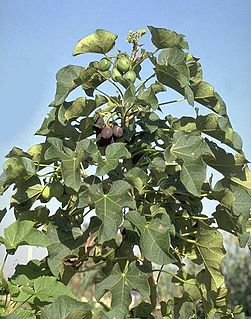
Jatropha curcas is a species of flowering plant in the spurge family, Euphorbiaceae, that is native to the American tropics, most likely Mexico and Central America. It is originally native to the tropical areas of the Americas from Mexico to Argentina, and has been spread throughout the world in tropical and subtropical regions around the world, becoming naturalized or invasive in many areas. The specific epithet, "curcas", was first used by Portuguese doctor Garcia de Orta more than 400 years ago. Common names in English include physic nut, Barbados nut, poison nut, bubble bush or purging nut. In parts of Africa and areas in Asia such as India it is often known as "castor oil plant" or "hedge castor oil plant", but it is not the same as the usual castor oil plant, Ricinus communis.
China has set the goal of attaining one percent of its renewable energy generation through bioenergy in 2020.

Algae fuel, algal biofuel, or algal oil is an alternative to liquid fossil fuels that uses algae as its source of energy-rich oils. Also, algae fuels are an alternative to commonly known biofuel sources, such as corn and sugarcane. When made from seaweed (macroalgae) it can be known as seaweed fuel or seaweed oil.

Food versus fuel is the dilemma regarding the risk of diverting farmland or crops for biofuels production to the detriment of the food supply. The biofuel and food price debate involves wide-ranging views, and is a long-standing, controversial one in the literature. There is disagreement about the significance of the issue, what is causing it, and what can or should be done to remedy the situation. This complexity and uncertainty is due to the large number of impacts and feedback loops that can positively or negatively affect the price system. Moreover, the relative strengths of these positive and negative impacts vary in the short and long terms, and involve delayed effects. The academic side of the debate is also blurred by the use of different economic models and competing forms of statistical analysis.

Sustainable biofuel is biofuel produced in a sustainable manner.
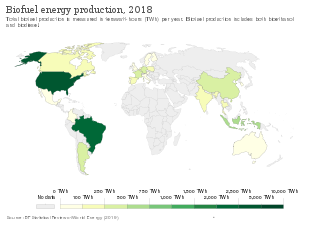
The use of biofuels varies by region. The world leaders in biofuel development and use are Brazil, United States, France, Sweden and Germany.

SG Biofuels is a privately held bioenergy crop company, which grows and researches Jatropha curcas for the production of biodiesel, bio jet fuel, and specialty chemicals.
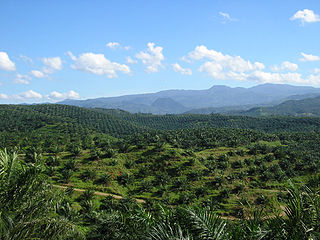
Palm oil production is important to the economy of Indonesia as the country is the world's biggest producer and consumer of the commodity, providing about half of the world's supply. In 2016, Indonesia produced over 34.6 billion tons of palm oil, and exported nearly 73% of it. Oil palm plantations stretch across 12 million hectares, and is projected to reach 13 million by 2020. There are several different types of plantations, including small, privately owned plantations, and larger, state- owned plantations. There are a variety of health, environmental, and societal impacts that result from the production of palm oil in Indonesia. A recent publication by the ONG Rainforest Action Network (RAN) indicates that the use of palm oil by some of the biggest chocolate and snacks' producers is increasing this problem.
















